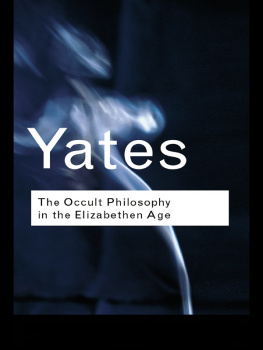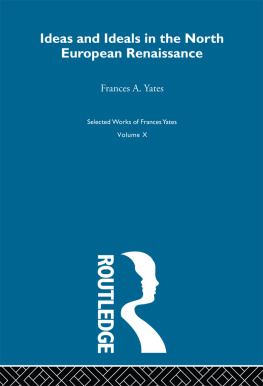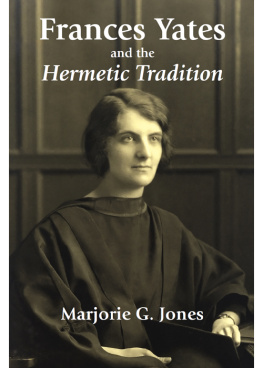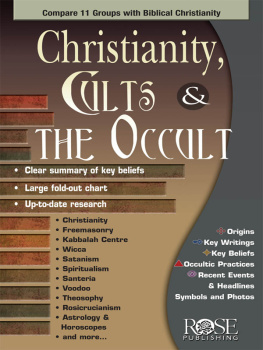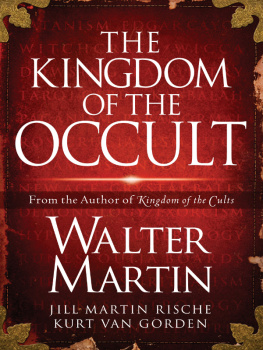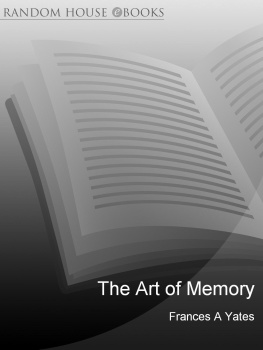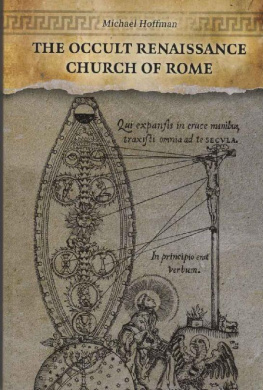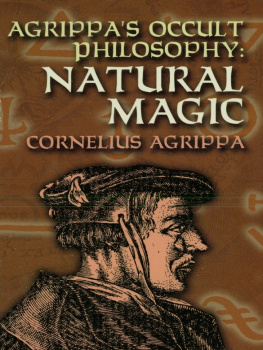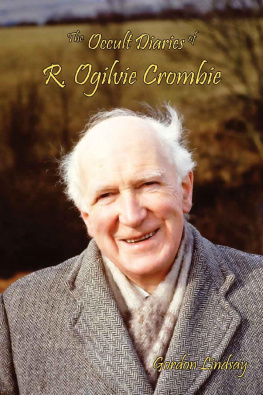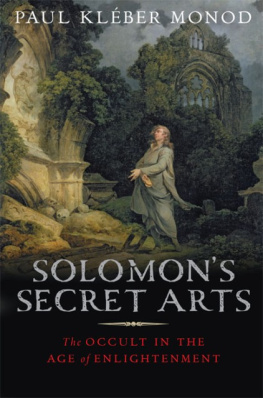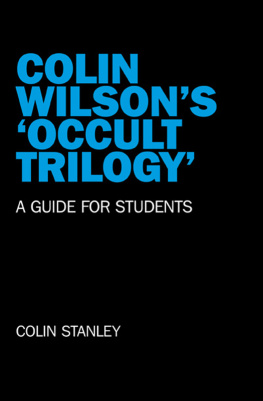First published 1979
by Routledge & Kegan Paul
Reprinted as volume VII of
The Selected Works of Frances Yates 1999
First published in Routledge Classics 2001
by Routledge
11 New Fetter Lane, London EC4P 4EE
29 West 35th Street, New York, NY 10001
Routledge is an imprint of the Taylor & Francis Group
This edition published in the Taylor & Francis e-Library, 2004.
1979 Frances A. Yates
All rights reserved. No part of this book may be reprinted or reproduced or utilised in any form or by any electronic, mechanical, or other means, now known or hereafter invented, including photocopying and recording, or in any information storage or retrieval system, without permission in writing from the publishers.
British Library Cataloguing in Publication Data
A catalogue record for this book is available from the British Library
Library of Congress Cataloging in Publication Data
A catalog record for this book has been applied for
ISBN 0-203-16711-2 Master e-book ISBN
ISBN 0-203-26188-7 (Adobe eReader Format)
ISBN 0-415-25409-4 (Print Edition)
ILLUSTRATIONS
PLATES
Gentile, Jew, Moslem, and Christian under the Trees of the Lullian Art. Illustration to Ramon Lull, Liber de gentili et tribus sapientibus (written 1274 in Arabic), in Lull, Opera omnia, Mainz, 172142 (Warburg Institute Photographic Collection)
The Tetragrammaton and the Name of Jesus. Page from Johannes Reuchlin, De verbo mirifico (1494), edition of Lyons, 1552 (Warburg Institute Library)
The Tetragrammaton and the Name of Jesus. Page from Francesco Giorgi, De harmonia mundi, Venice, 1525 (Warburg Institute Library)
Numerological relationships between the Three Worlds. Diagram illustrating discourse by Nicolas Le Fvre de la Boderie in Francesco Giorgi, LHarmonie du monde (French translation by Guy Le Fvre de la Boderie of De harmonia mundi), Paris, 1578 (British Library 698. f. 17)
Albrecht Drer, Melencolia I, engraving, 1514 (Warburg Institute Photographic Collection)
Albrecht Drer, St Jerome, engraving, 1514 (Warburg Institute Photographic Collection)
Lucas Cranach, The Melancholy Witch, painting, 1528 (Private Collection; photo by National Gallery of Scotland)
Francesco Giorgi, De harmonia mundi, Venice, 1525 (British Library, 7.b.3). Title-page, with note by the censor that the work abounds in arguments of Platonists and Cabalists and is therefore to be read with caution
Francesco Giorgi, De harmonia mundi, Venice, 1525. Page showing deletions by the censor (British Library 7.b.3)
John Dee, Monas hieroglyphica, 1564, title-page (Warburg Institute Photographic Collection)
John Dee, General and rare memorials, 1577, title-page (British Library 48.h.18)
Dee and his Enemies. Title-page of Dees Letter addressed to the Archbishop of Canterbury, 1604 (written earlier) (British Library, C.21.b.25 (3))
Faustus conjuring a Devil. Title-page of Christopher Marlowe, DoctorFaustus, edition of 1620 (British Library C.39.c.26)
Matthias Gerung, Melancolia, painting, 1558 (Karlsruhe, Staatliche Kunsthalle)
William Shakespeare, memorial bust, Stratford-on-Avon (National Monuments Record)
Rembrandt, The Inspired Scholar, etching, c. 16513 (British Museum, Department of Prints and Manuscripts)
FIGURE
PREFACE
This book has been difficult to write. It was necessary to find an order for the exposition, and, as soon as I began to work on it, about 1975, it became clear that there must be a first part on the history of Christian Cabala, as introduction to the study of the occult philosophy in the Elizabethan age. When this was achieved, the later parts of the book expanded in new directions, some of them quite unexpected by myself. The result is, I hope, a readable exposition of certain trends and movements hitherto quite unexplored in relation to the Elizabethan age, its philosophy, and its poetry. It is only a first attempt at tackling a problem which will take years of further work and thought to solve.
I began to write drafts for chapters of the book in 1975, continuing through 1976 to 1978. The oldest part of the book, that is to say the point on which I first began to work and think, is the chapter on George Chapmans Shadow of Night and the inspired melancholy, as depicted in Drers famous Melencolia I engraving. The thought that Drers imagery might help to solve the Chapman mystery came to me in 1949 when I was asked by Fritz Saxl to assist with the preparation of the new edition of Saturn and Melancholy by Klibansky, Saxl and Panofsky. In this way, I became familiar with the arguments and illustrations of this book long before it was published in 1964. Saxl suggested that I should write something on Elizabethan melancholy for inclusion in the book. This essay became much too long and detailed for incorporation in the book and it has remained in my files unpublished, though I used part of it as the basis of an (unpublished) lecture on Chapman and Melancholy given in the symposium on Chapman organised by Donald Gordon at Reading University in 1952. Though very different from the argument on Drer and Chapman developed in the present book, this early lecture, for me, links the present work with the period of my early Warburgian studies under the original members of the Warburg Institute, Saxl and his group. It is my hope that the new approach to Saturn and Melancholy through the Hermetic Cabalist tradition which is attempted in this book may perhaps eventually help to connect the early Warburgian studies with those of later scholars connected with the Institute.
In January 1977 I gave a lecture to the Society for Italian Studies on Elizabethan Neoplatonism Reconsidered: Spenser and Francesco Giorgi. This lecture was published by the Society for circulation among members only. With some alterations and revisions, it forms the basis of the chapter on Spensers Neo-platonism and the Occult Philosophy: John Dee and The FaerieQueene. I am indebted to the Secretary of the Society for permission to reprint it. Apart from this one chapter, the whole of this book is newly written. No other part of it has been printed elsewhere.
This book obviously owes a very great debt of gratitude to the work of Gershom Scholem, without which it could not have been written. The influence of the late Chaim Wirszubski was very important. There were useful discussions with Raphael Loewe. David Goldstein made valuable corrections. Conversations which I had with Isaiah Schachar not long before his death, though not directly about my work, were subtly relevant. In the summer of 1976, Daniel Banes called and left with me his extraordinary edition of

